A VIRTUAL TOUR OF THE INSTALLATION AT INDEPENDENCE SEAPORT MUSEUM (On view through September 2019)
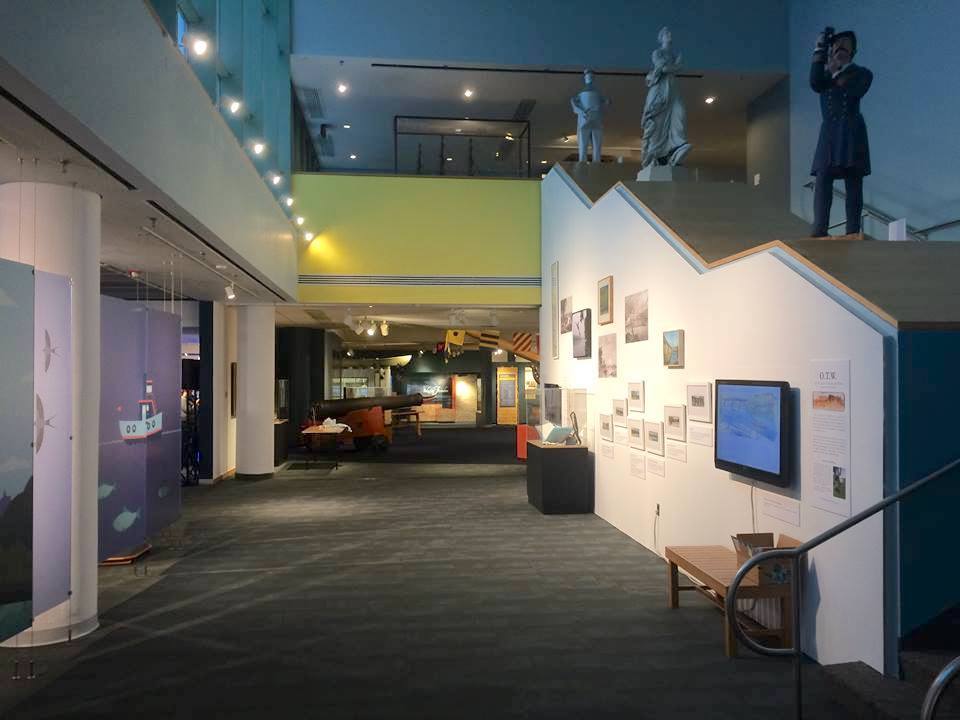
O.T.W. On the Water:The Schuylkill River, an installation by James Lancel McElhinney at Independence Seaport Museum. Now on view through September 2019, the exhibit features works by Patrick Connors, Tom Judd, Edmund Darch Lewis, Stacy Levy, Johann Georg Martini, James Lancel McElhinney, Deirdre Murphy, Granville Perkins, Jacob Rivkin, Joseph Sweeney and Graham White. Living artists working in a variety of media, from intaglio printmaking and painting, to video and installation, together with picturesque engravings by historical artists celebrate a river in transition, inviting visitors to explore its banks and waters, perhaps to become part of its reclamation.
The exhibition includes a series of podcasts that will be unpacked monthly, during the show’s run.
O.T.W. On the Water: The Schuylkill River, an installation at Independence Seaport Museum in Philadelphia, was conceived as a monographic show about my 2018 journal-painting project that explores a three-mile stretch of Philadelphia’s historic Schuylkill River, as it passes through Fairmount Park from East Falls to Fairmount Waterworks, beside the Philadelphia Museum of Art.

As the work developed, my research deepened. I realized that there was no way for me to do justice to my subject–the river–without bringing more artists into the conversation. Chief curator Craig Bruns was a terrific thought-partner, open to letting the process unfold, leading us beyond conventional paradigms to a gesamtkunstwerk–a visual conversation around an historic waterway.
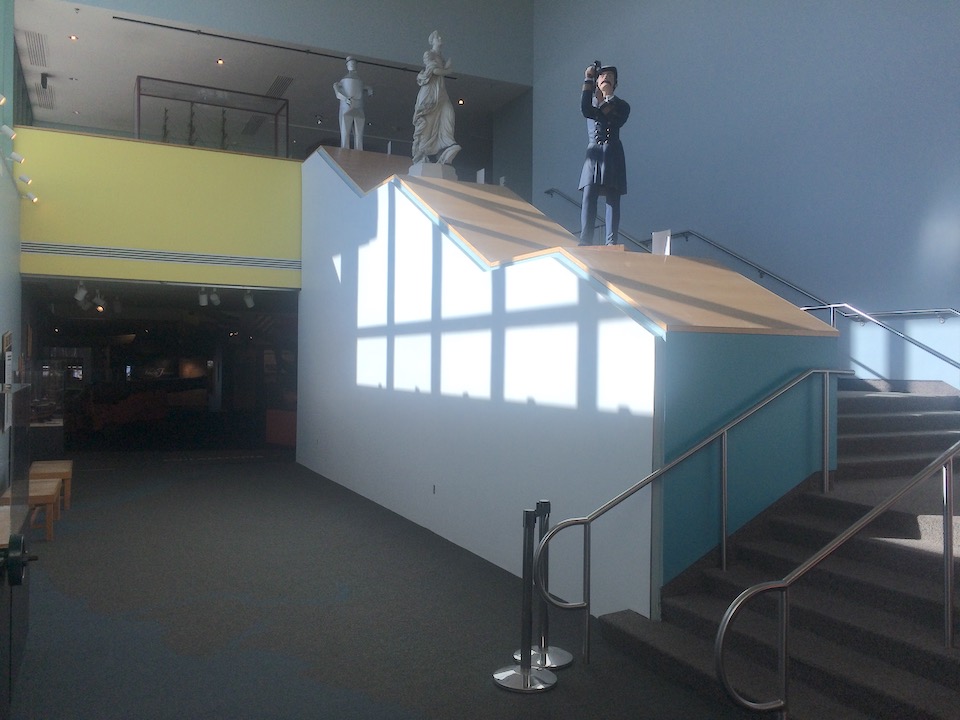
View of the space, prior to resurfacing the wall and installing the exhibition
The result is the surprising use of a challenging surface. Reaching across time and media, from oil painting, digital and intaglio printmaking, to documentary film and video animation, the exhibition design by Daniel Kennedy brings together works by historic and living artists, across a wide range of styles and media. When the curtain rose, revealing the new River Alive! galleries across the corridor, it all made sense. It is a great privilege to collaborate with so much talent. Let’s take a virtual tour of the exhibition:
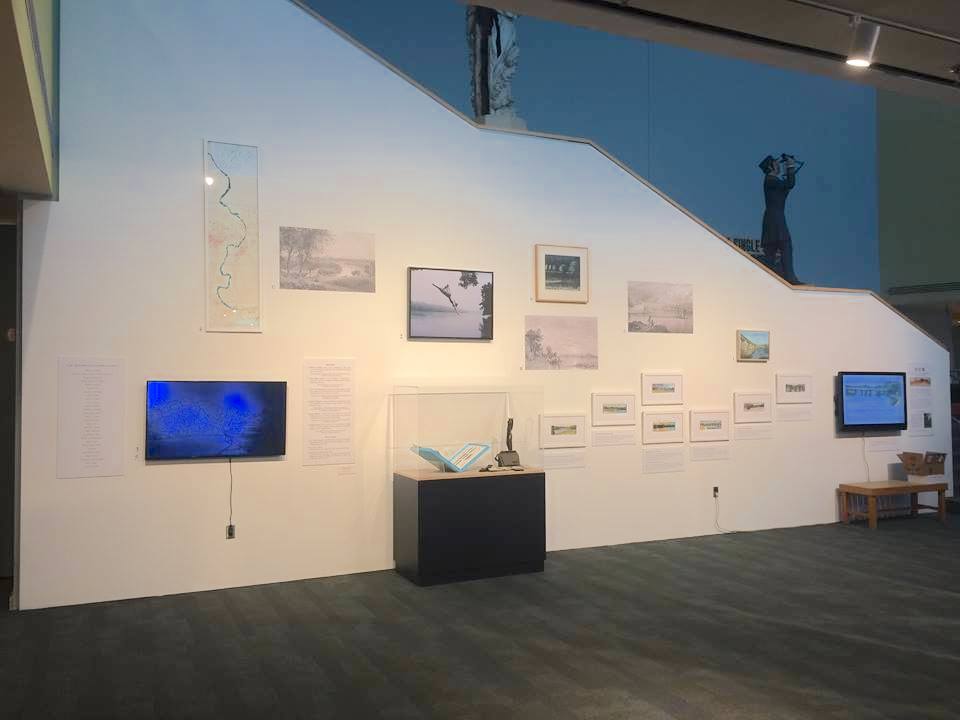
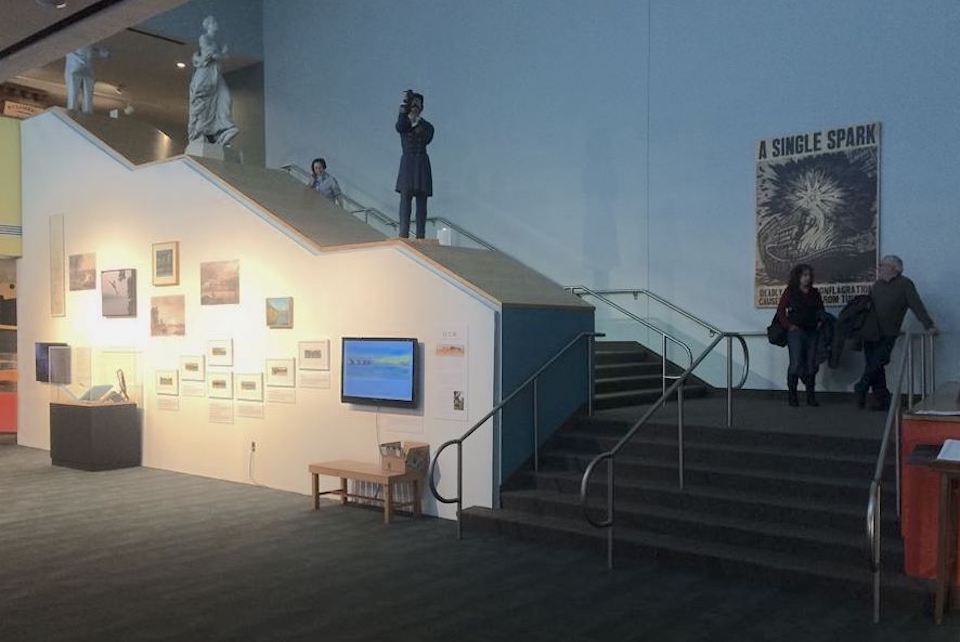
The space was challenging. We were not working with a conventional white box. As my work progressed and the vision took shape, I would joke with Craig Bruns and Daniel Kennedy that the exhibition would be something like figuring out what to do with a basket of secret ingredients on a competitive cooking show. Located opposite the galleries being readied for River Alive!, the wall flanked a grand staircase leading up through a glass atrium to the second floor displays. I had seen a similar configuration before, on an even grander scale at Museum of Fine Art Houston.
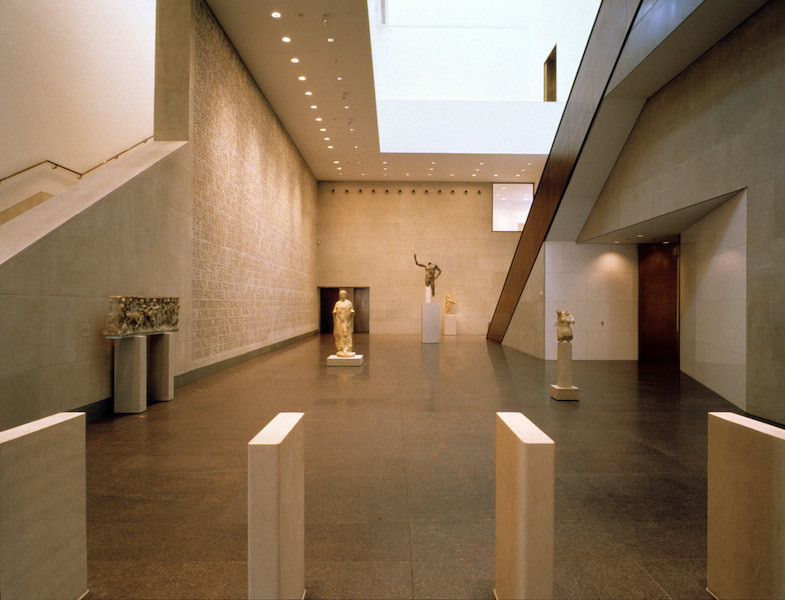
View of the lobby, Museum of Fine Arts Houston
The planning process was embraced with a collaborative spirit. Craig and Dan knew the space. They worked with it on a daily basis. The one decision In which I participated concerned the placement of my prints on the wall. Hanging them in a straight line allowed for insufficient room to accommodate two video monitors, a vitrine and the necessary text-panels.I suggested a way of stacking the images to suggest waves, which echoed in reverse the ascending diagonals of the atrium stairway.
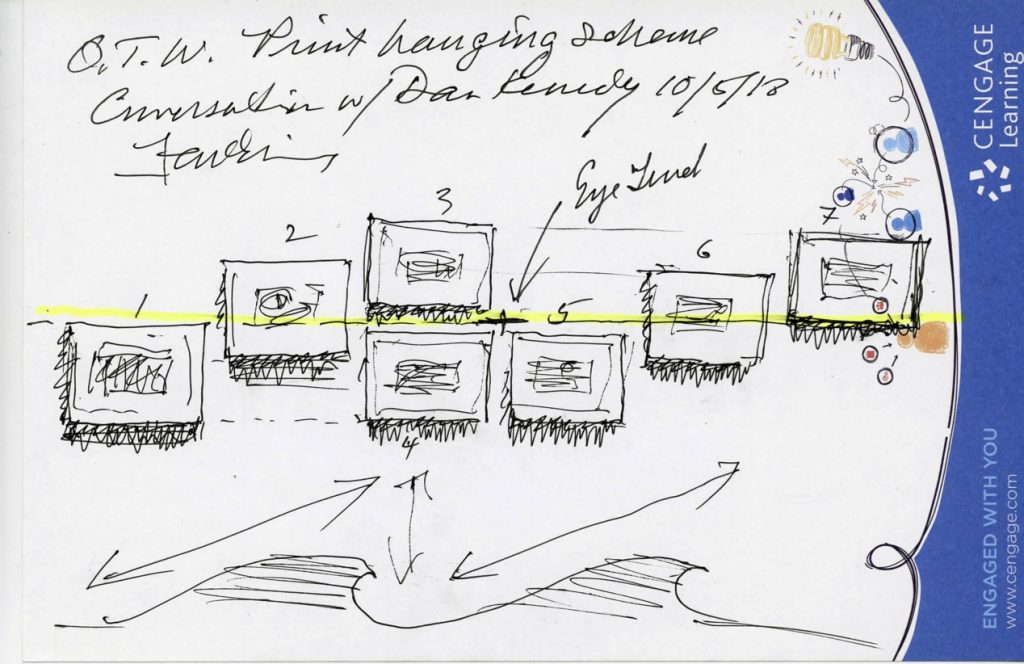
Notepad with print-hanging scheme
Sketches emailed back and forth. Dan developed the grand plan incorporating my suggestions, not because it was the will of the artist, but because they solved a problem with design sense. The only thing I insisted on was for Dan to be credited as one of the artists in the show, for his imaginative transformation of a difficult space. (below)
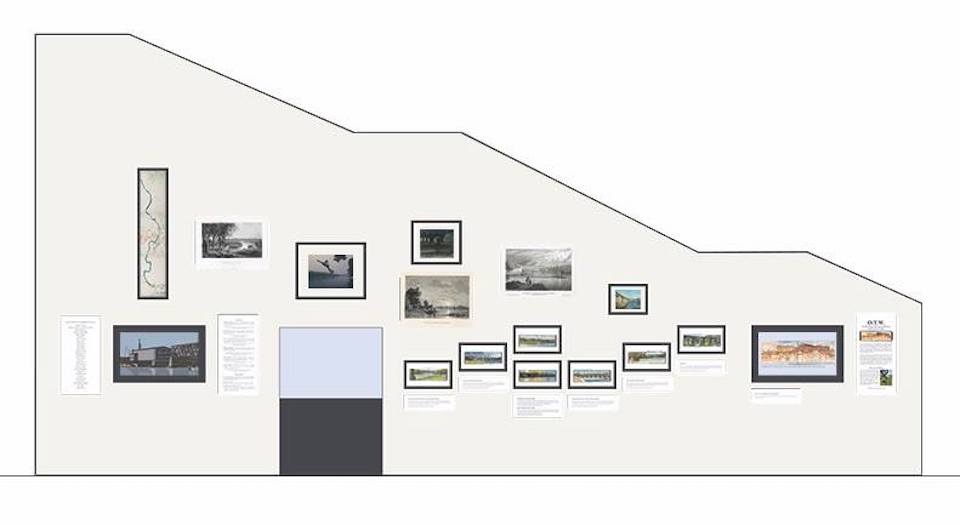
Dan Kennedy’s grand plan
In preparing the language to accompany the exhibition, I asked Craig how I should be identified. This was no longer a one-person show, but a thematic exhibition curated by an artist. Should I be identified as a guest curator? No, Craig replied. That would be too confusing. He was the chief curator. You’re the artist, he told me. Other artists are in it, but this is your show. His solution was to call it an installation by James Lancel McElhinney. I thought about that for a minute, and then asked if if that meant I was now an installation artist. We both laughed. What’s in a name? More important to me was the sentiment expressed by Stacy Levy, inaugural artist for Art@Bartrams. On view in our exhibition is a film produced by Bartram’s Garden and Mural Arts Philadelphia, documenting the installation of Levy’s Tide Field project. In it Levy states,
“Im trying to make a work that brings people down to meet the river, see the changes, so they might get to known it, and then they’ll get to love it, and then they’ll want to preserve it”

Moving from right to left, as one would upon entering the building, is an introductory text-panel, to the left of which is a wall-monitor displaying a digital animation of my Schuylkill River sketchbook. Click on the arrow to view the animation.
Continuing leftward are seven framed archival pigment prints, unpacked from my new book (O.T.W. The Schuylkill River. Needlewatcher Editions. New York. 2018), hung according the plan already described. Above them, from right to left, is a painting in oil by Patrick Connors, followed by 1830 engraving of the Colossus (Spring Garden Street) Bridge by Johann Georg Martini, enlarged and applied directly to the wall. Below and to the left is a similar enlargement of a nineteenth-century view of the Schuylkill River by Edmund Darch Lewis. Above it is an intaglio print by Joseph Sweeney.
The following images are taken from O.T.W. The Schuylkill River, a suite of seven archival pigment prints, published in 2018 by Needlewatcher Editions, in a limited edition of fifty, with handmade Solander (clamshell) box, title-page, colophon and chapbook (PDF below)
As of February 1, 2019 copies of O.T.W. On The Water: The Schuylkill River have been acquired by
Free Library of Philadelphia. Print and Picture Collection
Historical Society of Pennsylvania (pending)
Independence Seaport Museum. Schuylkill River Collection
Pennsylvania Academy of the Fine Arts. Special Collections Archive. (in process)
Philadelphia Water Department. Prints, Maps and Archives.
Temple University. Samuel L. Paley Library Special Collections Research Center
Framed prints on display:
LOOKING SOUTH FROM BELOW THE CONNECTING RAILWAY BRIDGE
Facing northwest, sheltered by the arches of the Pennsylvania Railroad Connecting Bridge on a rainy day. Kelly Drive is to the right. A bike-trail runs beside it. Schuylkill Expressway roars behind the western bank, MLK Drive and Dragon-Boat dock, on the wooded shore beyond. A solitary rower moves downstream.
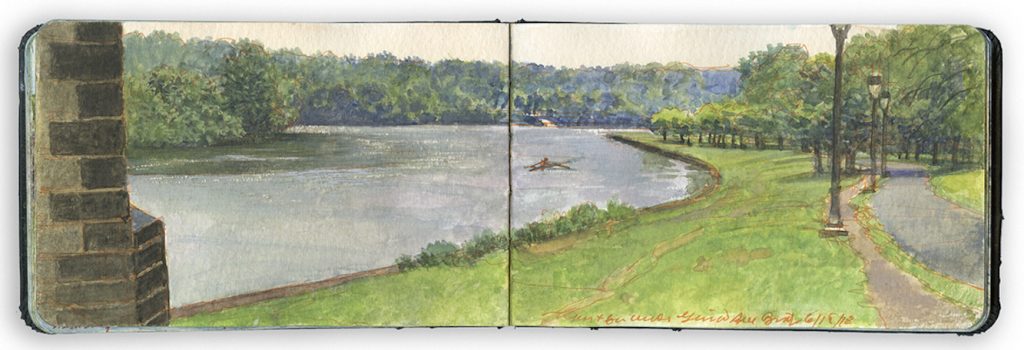
LOOKING SOUTH FROM THREE ANGELS
A broad esplanade on the eastern bank was created when landfill replaced pestilential wetlands. A grove of cherry trees was created from a gift to the city by Japan, honoring the sesquicentennial of American independence. Rising behind the Connecting Railway Bridge is the distant form of the Comcast Technology Center.
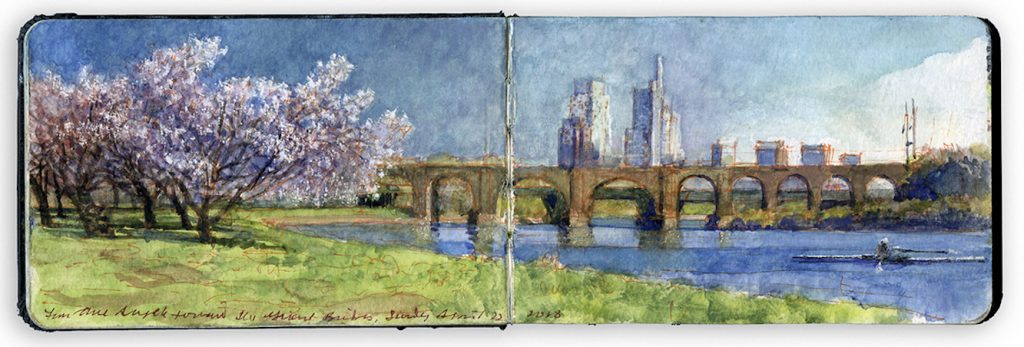
LONE OARSMAN PASSING THREE ANGELS
Standing on the western shore of the river below the Dragon Boat Dock, looking southwest. Imagine being in the middle of the river, where Thomas Eakins envisioned Max Schmitt, at rest in his single scull. Passing Three Angels, a lone oarsman pulls downriver toward stone arches, the Connecting Railway Bridge
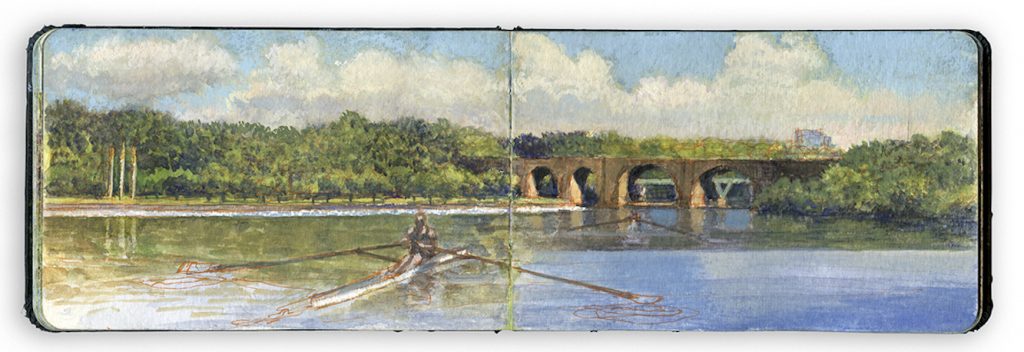
SUNSET: COLUMBIA RAILROAD BRIDGE
Getting on the water before work marks a tradition dating from the nineteenth century. Social diversity is an enduring trait of amateur competitive rowing. CEOs and plumbers, men and women, young and old. Mind, body, time, and the river, all become one, in greeting the day or bidding it farewell.
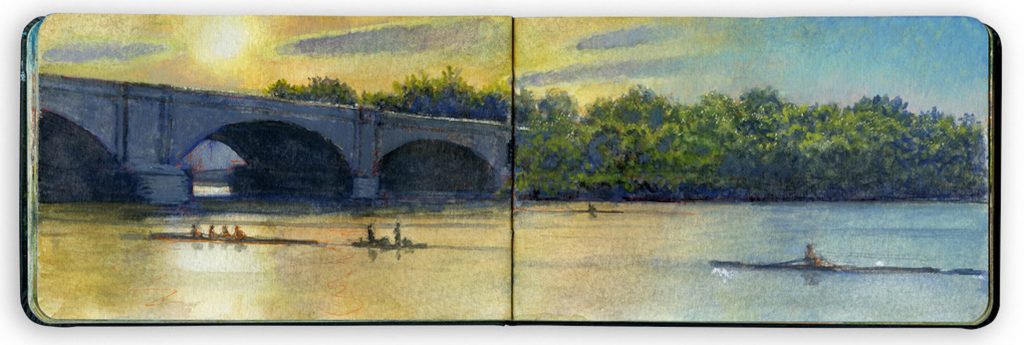
LOOKING DOWNSTREAM TO COLUMBIA RAILROAD BRIDGE
Marking a point halfway between Philadelphia Museum of Art and East Falls, Columbia Railroad Bridge was constructed in 1920. A grandstand for watching Schuylkill Navy regattas sits just upstream. Behind the distant tree-line is Memorial Hall. Built for the 1876 Centennial Exposition, it now houses The Please Touch Museum.
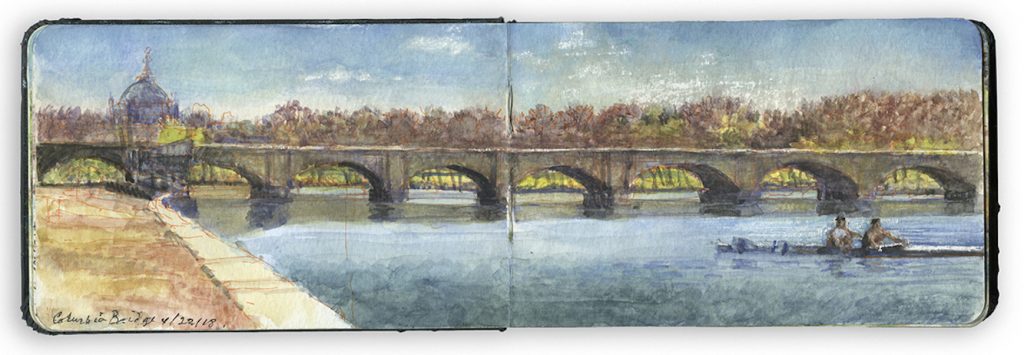
BELOW STRAWBERRY MANSION BRIDGE
Built in 1897, filigree steel arches soar above the river, connecting the eastern and western sections of Fairmount Park. Competing crews assemble upstream at a chain of pontoon boats. The race begins. Passing under the bridge, slender hulls glide upon the water on their way downstream to the finish line.
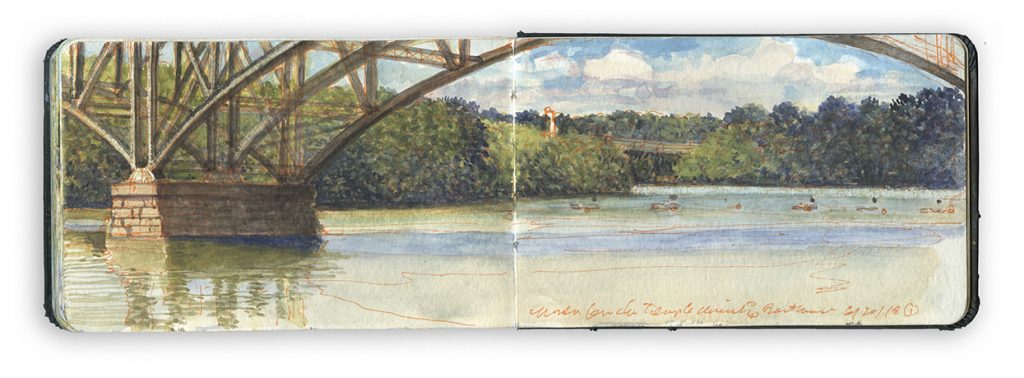
TWIN STONE
Known to rowers as “Twin Stone”, for many these bridges mark the northern limit of their range. Submerged rocks bid a cool welcome, yet some venture upstream, to enjoy the calm waters below Manayunk. While I painted this scene, three snapping-turtles appeared offshore, in a patch of bright sunlight.
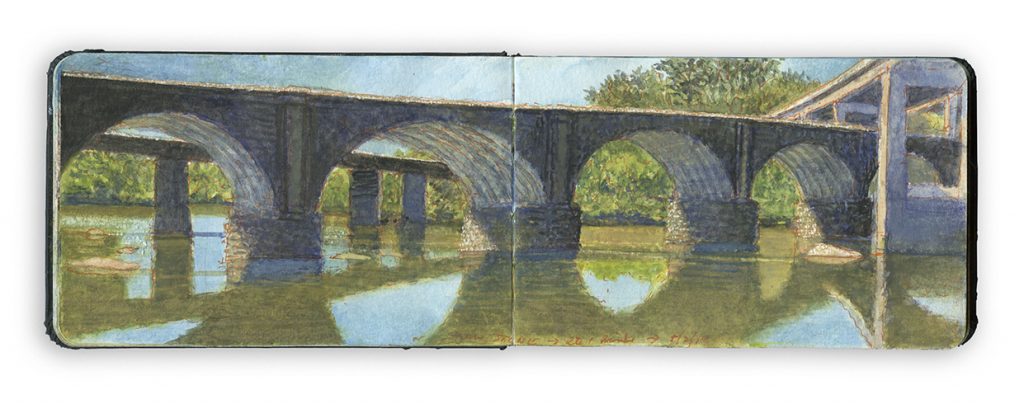
RIVER VISIONS: A selection of works inspired by, and engaged with the Schuylkill River by artists Patrick Connors, Tom Judd, Daniel Kennedy, Stacy Levy, Edmund Darch Lewis, Johann Georg Martini, Deirdre Murphy, Granville Perkins, Jacob Rivkin, Joseph Sweeney and Graham White.
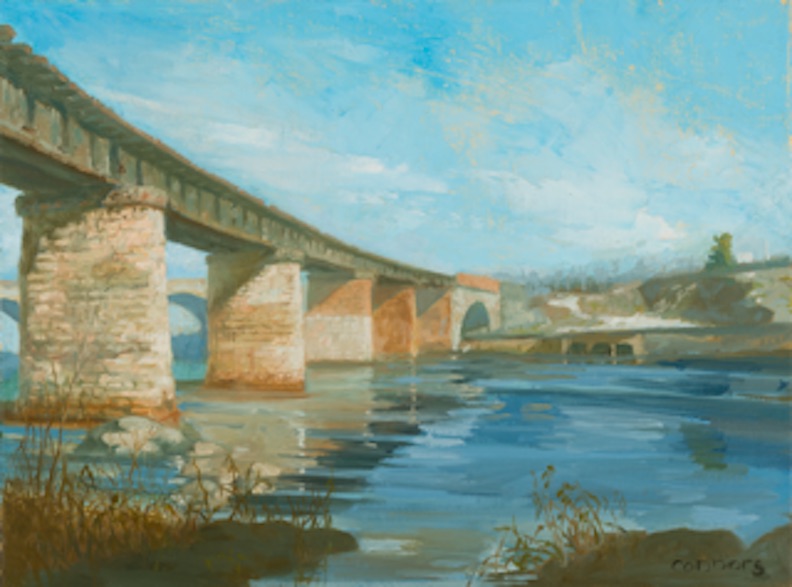
PATRICK CONNORS
Late Winter, Philadelphia & Reading Railroad Bridge, 14” x 18” [framed], oil on linen, 2017
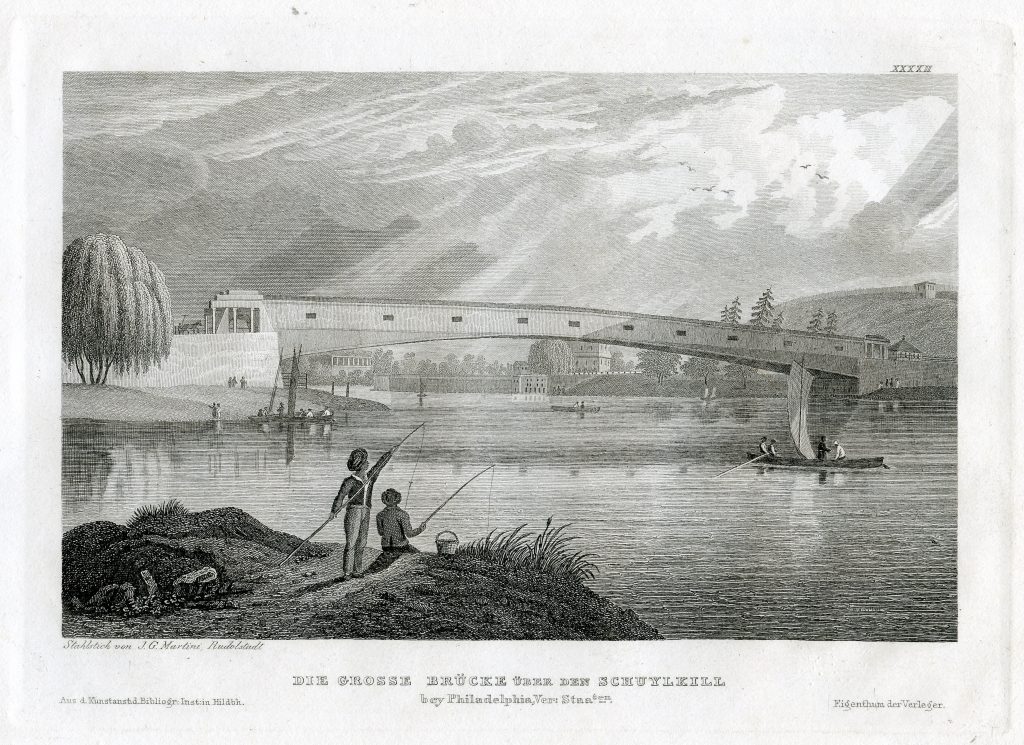
JOHANN GEORG MARTINI. Die Grosse Brücke über dem Schuylkill bey Philadelphia, Ver: Staaten. (The Colossus Bridge over the Schuylkill River in the City of Philadelphia). Steel engraving by J.G. Martini, Rudolstadt, Thurginia, Germany. Publisher: Figenthum. 1833. This view of the Colossus Bridge, with Fair-Mount behind, and the Water Works on the far shore beyond is from the west bank, looking northeast. The 340-foot wooden covered bridge was constructed in 1812 and destroyed by fire in 1838. Spring Garden Street Bridge now spans the river at the site.
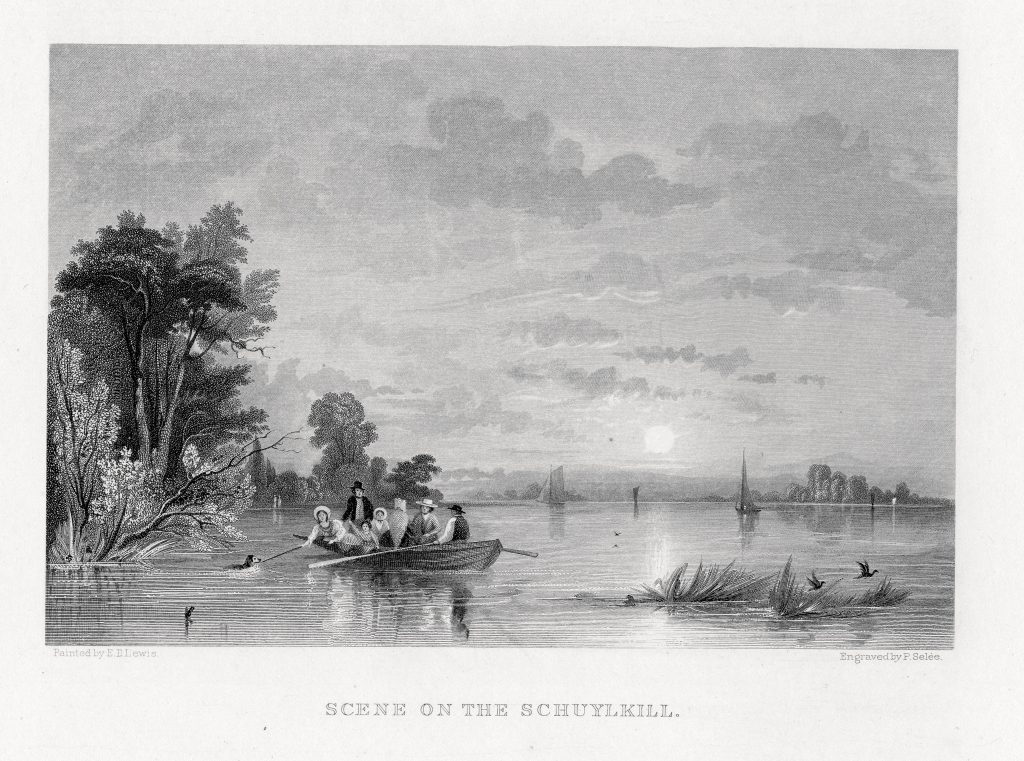
EDMUND DARCH LEWIS (1835-1910). Scene on the Schuylkill. Steel engraving by P. Seleé.This focal point of this romanticized view of the river shows. The rescue of a family dog would have appealed to a mid-19th-century appetite for sentimental genre scenes. Unlike other scenes of the Schuylkill, the location is ambiguous. Submerged trees and grassy sandbars give a sense of the river’s character before its banks were girded with long esplanades
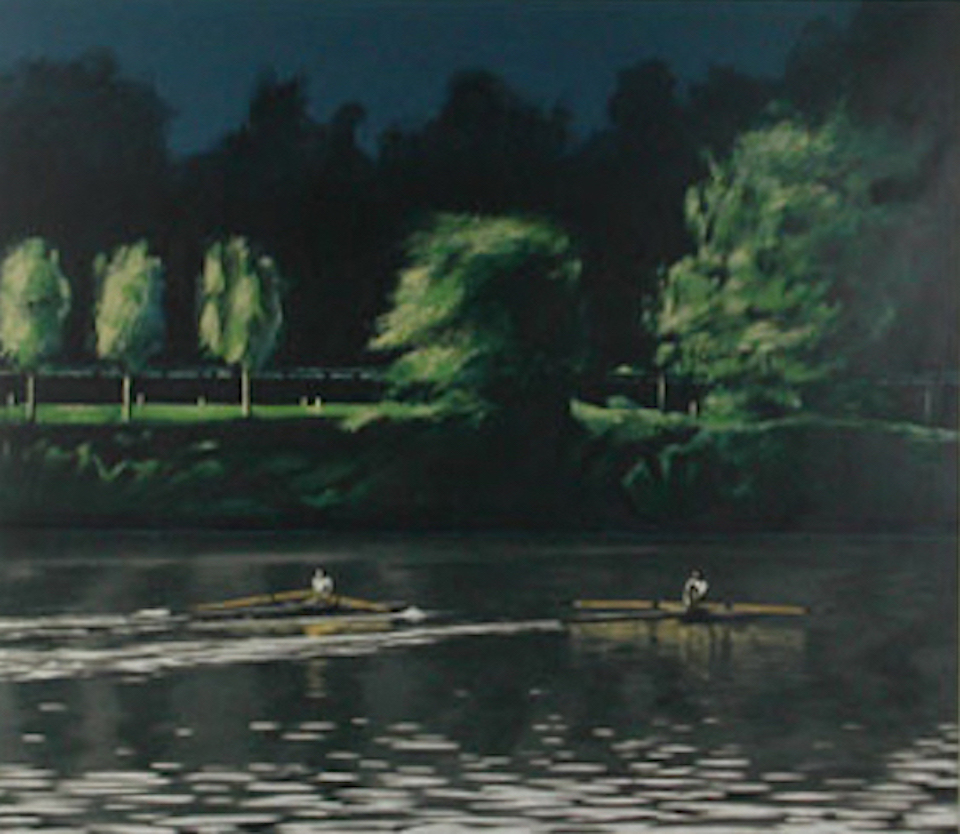
JOSEPH SWEENEY. “Light into Shadow” 6/50 Color etching.13.5”x15.5” framed size 22×23” © Joseph Sweeney 1985
Here the wall is divided by a large vitrine, containing the Solander box which acts as the binding for the limited-edition of O.T.W. The Schuylkill River, together with artifacts of my journal-painting practice: shoulder-bag, watercolor box, brushes, pens and candid photographs documenting my fieldwork.
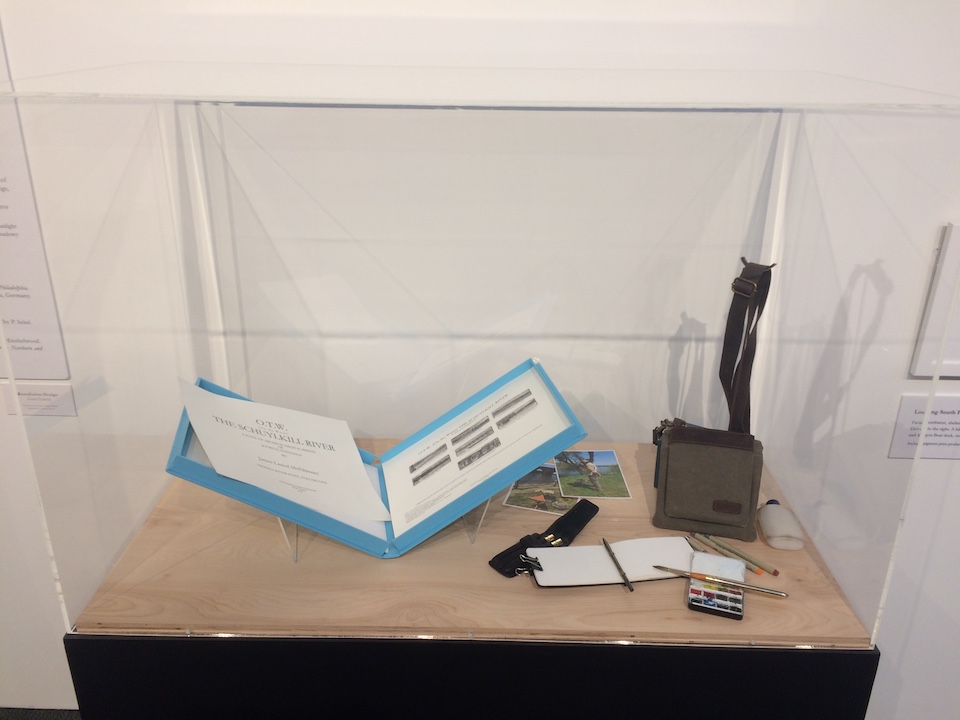
Vitrine containing the Solander box, title page and colophon for O.T.W.The Schuylkill River, with McElhinney’s journal-painting field-equipment.

Solander box, title page and colophon for O.T.W.The Schuylkill River, limited edition of fifty. Needlewatcher Editions. New York, 2018. Produced by Brilliant Graphics, Exton PA and Shenzhen, China.
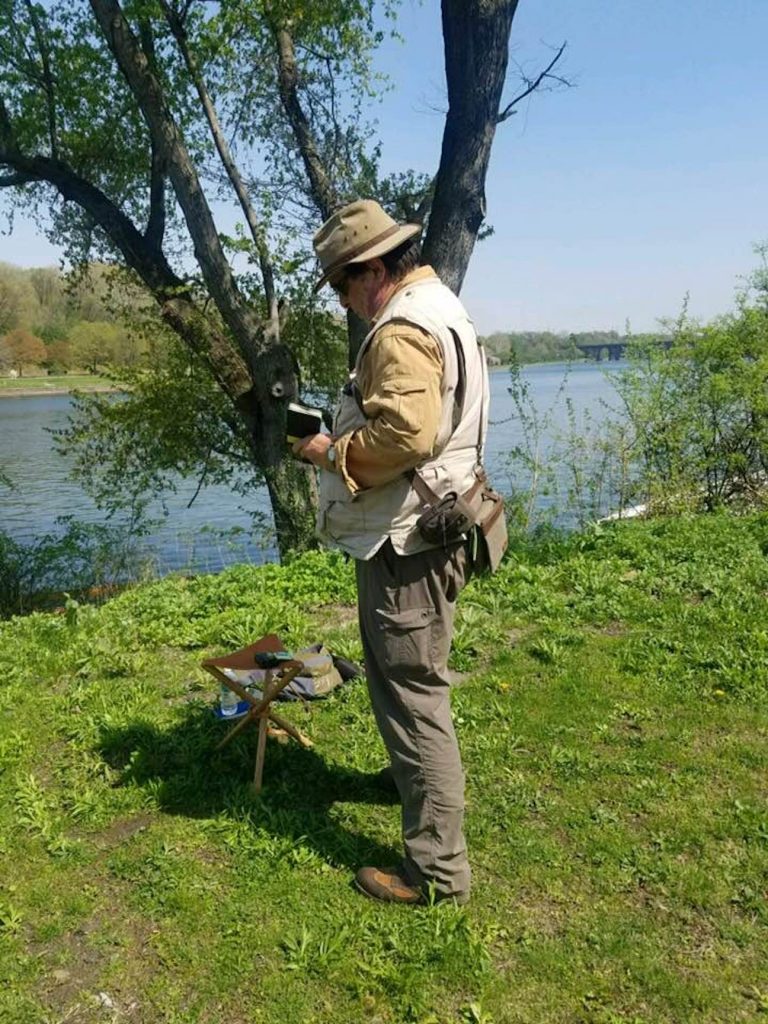
James Lancel McElhinney at work along he western bank of the Schuylkill near the Dragon-Boat dock
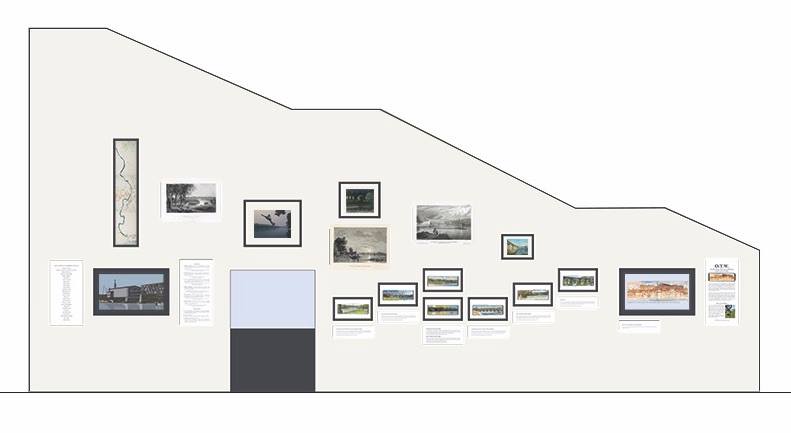
Directly above the vitrine is an archival pigment print on canvas:
TOM JUDD. River Bank. Archival digital print on canvas. 34 x 26” 2018
Website: www.tomjuddart.com
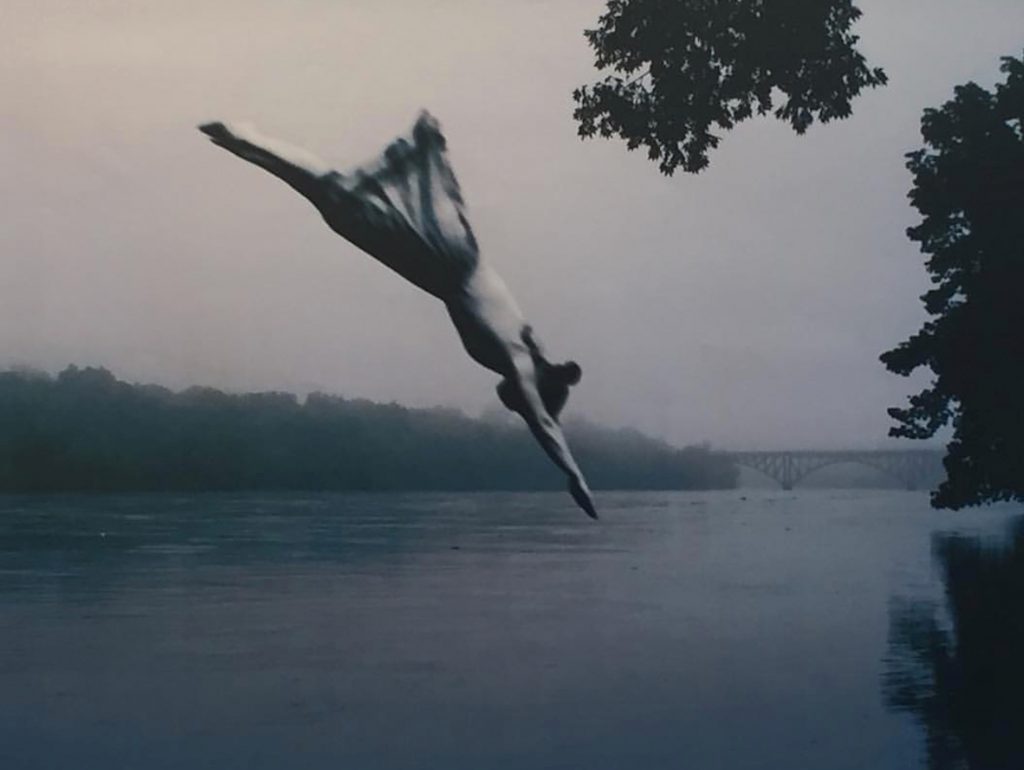
To the left is a text-panel identifying works by River Artists Patrick Connors, Tom Judd, Stacy Levy, E.D. Lewis, J.G. Martini, Deirdre Murphy, Granville Perkins, Jacob Rivkin and Joseph Sweeney.
Below is a downloadable PDF of all exhibition texts.
Directly above the text panel is an enlargement of a steel engraving, which like the J.G. Martini and E.D. Lewis, is applied directly to the wall as a decal:
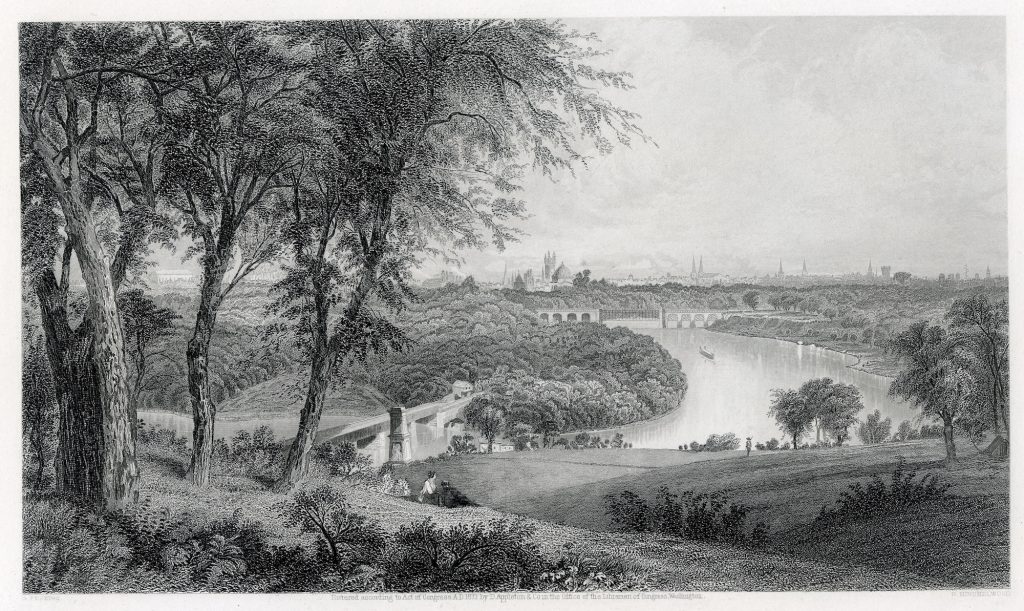
GRANVILLE PERKINS (1830-1895) Philadelphia from Belmont (West Park).Engraved by R. Hinshelwood. Williams, W. Appleton’s Handbook of American Travel: Northern and Eastern Tour. New York. 1870.This plate from Appleton’s second edition of the travel-guide covering Philadelphia Below is the first Columbia Railroad Bridge, built in 1834. In the distance is the 1867 Pennsylvania Railroad Connecting Railway Bridge. Two great stone arches replaced its central truss in 1912-1915, when the viaduct was widened from two tracks to five.

To the left is located another video wall-monitor, running two films:
STACY LEVY: Tide Field: Art on the Schuylkill. 2018.
View the film
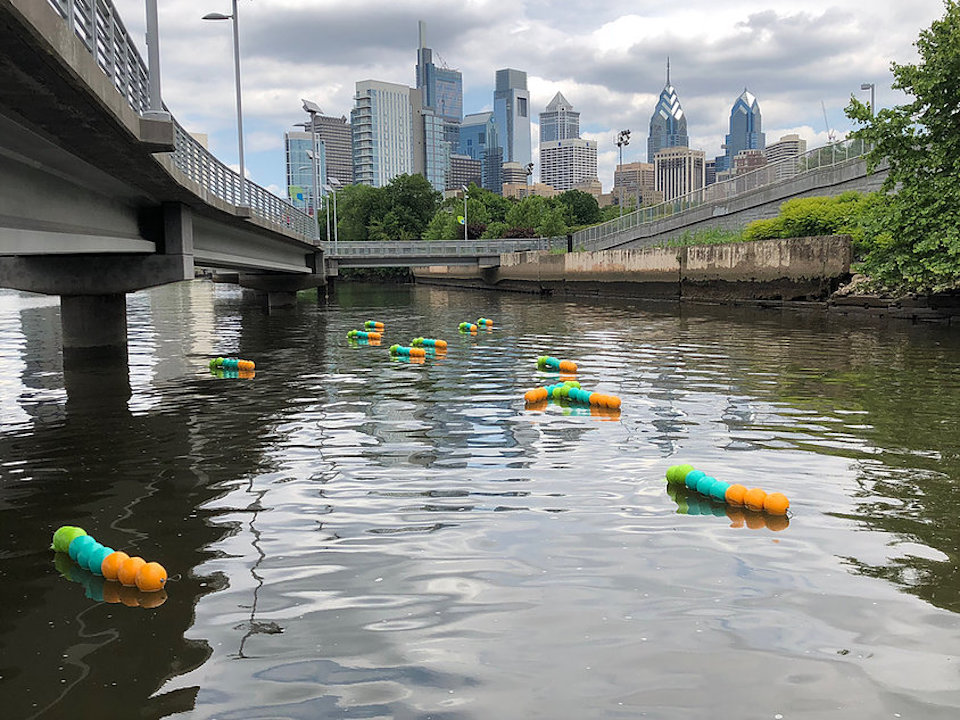 Courtesy Mural Arts Philadelphia and Bartram’s Garden
Courtesy Mural Arts Philadelphia and Bartram’s Garden
Website: www.stacylevy.com
JACOB RIVKIN.Floating Archives. 2018, Hand-drawn digital animation, field recordings, 6:00 minutes
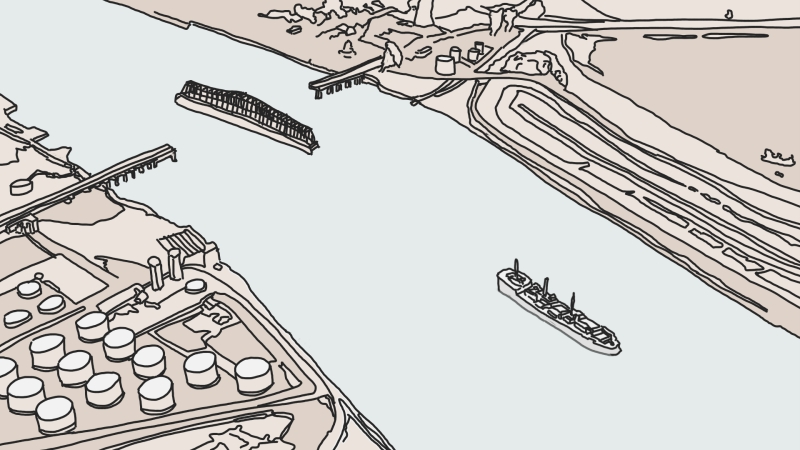
This compilation of animations was featured in the public artwork Floating Archives on the lower Schuylkill River in September 2018. Based on archival photographs and drawings, these animations were projected on screen suspended between two canoes as the watercraft traveled northwards from Bartram’s Garden in southwest Philadelphia to the dam at the Fairmount Water Works below the Philadelphia Museum of Art. This film is organized spatially, reimagining the labor, leisure, and obscured histories of this waterway from 1800 to today. Website: www.jacobrivkin.com
Above the monitor to the left is an intaglio print produced with Philadelphia master-printer Cindi Ettinger.
DEIRDRE MURPHY
Mapping Movements: The Invisible Highways of Urban Birds at the Waters Edge.
60″h x 14″w. Etching and Chine Colle on Japanese Rice Paper. 2018. Printed by C.R. Ettinger Studio.
Funded by University of Pennsylvania; Penn Program in Environmental Humanities.
Deirdre Murphy was awarded the Ecotopian Toolkit Grant by the Penn Program in Environmental Humanities to create the print entitled, Mapping Movements, that illuminate avian migration routes along the lower Schuylkill Valley and urban fringe of the Delaware River watershed. Data visualization was in collaboration with John Heinz National Wildlife Refuge, The University of Pennsylvania, Pennsylvania Audubon Society and Drexel University’s Academy of Natural Sciences. Website: www.deirdremurphyart.com

PODCASTS
The final component of this exhibition is a series of interviews with River Artists, writers and and others whose creative and professional activity engages the Schuylkill River and watershed.
Click on this link to listen

ADDENDUM: RIVER ARTISTS
CRAIG BRUNS is Chief Curator at Independence Seaport Museum. He was trained as a visual artist at Tyler School of Art, Temple University. Prior to joining the museum in 1995, Bruns worked in the Philadelphia arts community as an independent curator, and as a conservation tech at Philadelphia Museum of Art.
PATRICK CONNORS looks to the Schuylkill as his muse. An erstwhile rower, classically trained in drawing and painting, for decades Connors has set up his easel along the river. Drawn to its banks and bridges, Connors re-envisions what he beholds, with a reverence for history and a timeless gaze.
TOM JUDD is celebrated for his personal, symbolic and enigmatic imagery. In this cinematic freeze-frame, Judd imagines a Victorian woman in an antiquated bathing-costume, about to plunge into the river. Distant arches of Strawberry Mansion Bridge locate this feat on the Schuylkill River.
DANIEL KENNEDY (Exhibition designer) is Visual Services Representative in the Education Department at Independence Seaport Museum. He is a graduate of University of the Arts.
STACY LEVY is an international environmental artist based in Central Pennsylvania. In Tide Field, Levy anchored columns of brightly-colored spheres along the Schuylkill estuary, which are submerged and exposed by tidal activity. Seeking locations that “provide the opportunity to make visible some of the forces at work at the site”, Levy invites the viewer to consider “how nature functions in an urban setting”.
EDMUND DARCH LEWIS was born in Philadelphia in 1835 and trained at the Pennsylvania Academy of the Fine Arts. Lewis traveled through much of the Northeast United States in search of subjects, earning a strong reputation as a landscape and maritime painter. He died in Philadelphia in 1910.
JOHANN GEORG MARTINI was a German draftsman and engraver born in 1785. Little is known of his life. While he produced American scenic views, there is no evidence that he ever visited the United States. His death is reported as either 1842 or 1853.
JAMES LANCEL McELHINNEY was born and raised in the Delaware Valley. Holding degrees from Tyler School of Art and Yale University. Best known for his Hudson Valley journals, and paintings of historic battlegrounds, McElhinney received a Pollock Krasner Grant in 2017. Later that year he published Hudson Highlands: North River Suite Volume One, a suite of contemporary prints in the spirit of nineteenth-century topographical art. His focus today is on American waterways.
DEIRDRE MURPHY received an Ecotopian Toolkit Grant from the Penn Program in Environmental Humanities, and help from the John Heinz National Wildlife Refuge, The University of Pennsylvania, Pennsylvania Audubon and Drexel University’s Academy of Natural Science, to create Mapping Movements; an intaglio print mapping avian migration-routes along the urban fringe of the lower Schuylkill Valley.
GRANVILLE PERKINS was born in Baltimore in 1830, He studied at he Pennsylvania Academy of the Fine Arts, later moved to New York where he exhibited at the National Academy of Design. Best known for landscapes and maritime subjects, Perkins was an accomplished water-colorist who produced both scenic views published in travel books such as Appleton’s. He died in New York in 1895.
JACOB RIVKIN complied Floating Archives, a series of animations based on archival photographs and drawings, to be exhibited as a public artwork on the lower Schuylkill River in September 2018. These animations were projected onto a screen suspended between two canoes traveling northwards from Bartram’s Garden to the dam at the Fairmount Water Works. This film is organized spatially, reimagining the labor, leisure, and obscured histories of the waterway from 1800 to today.
JOSEPH SWEENEY based this color etching on a Schuylkill River scene he first captured in oils, early one summer morning. Rowers are out on the river, just as sunlight breaks the horizon. Oarsmen’s jerseys contrast with the shadowy backdrop of the wooded far bank. Traffic sounds hum in the distance, but on the water (which had been a thoroughfare in the 18th-century), a sense of calm and timelessness prevails.
GRAHAM WHITE is a visual artist and designer. Trained at the School of the Museum of Fine Arts Boston and at Tufts University, White divides his time between Manhattan and Connecticut. Graham created the sketchbook animation and designed this website.
LITERARY MATERIAL NOT PRESENTED ON WALL-TEXTS:
“In the past 30 years, the Schuylkill has come back to life. Fish have returned, the swimming legs of triathlons are held in the river, and rowers no longer need worry about being dunked in the water after a victorious race. New artists, including James McElhinney, have come to explore the river’s banks, lured like others over the centuries by the confluence of earth and land and sky. And while the landscape has changed, with new highways and buildings and bridges added to the views, for any artist who pays close attention there is still beauty to be had along the Schuylkill, at every turn”.
—Adam Levine. Historian and Archivist, Philadelphia Water Department
(Excerpt from the introduction to O.T.W. The Schuylkill River: Hidden River Suite Volume One. Needlewatcher Editions. New York. 2018)
“Leaping the dam with swift descent,
Now is the Schuylkill’s deep course bent
Beside that town of bursting fame
Which has despoiled the stream its name…
With accent fond and tender tone
Beyond all streams that land can boast,
I most repeat, and love the most.
To hymn its praise I weave this rhyme…”
–Charles Karsner Mills
Excerpt from The Schuylkill: A Centennial Poem. 1876
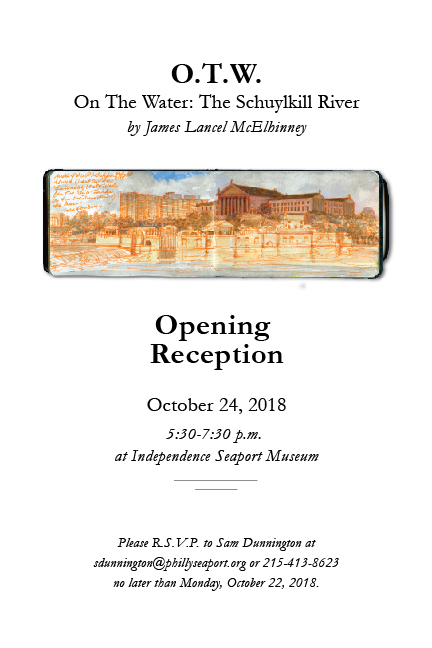
With Chief Curator Craig Bruns (sporting the official O.T.W. ball-cap) just minutes before the reception.

Independence Seaport Museum President, the amazing John Brady, President and CEO of Independence Seaport Museum, addressing reception attendees
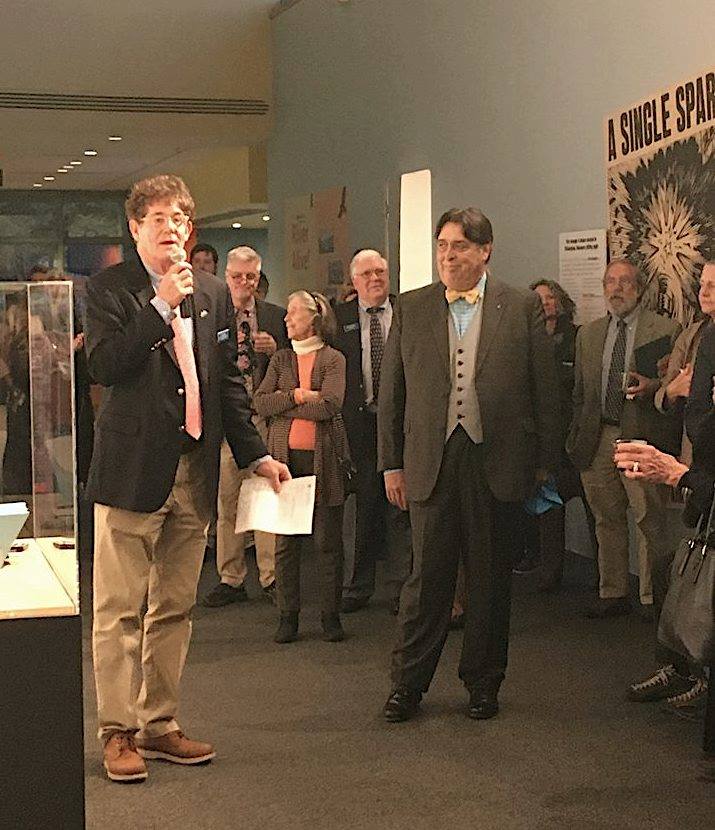
Philadelphia painter and essayist Nancy Bea Miller wearing the official O.T.W. ball-cap. On a whim I had a Garment District hat-maker produce several dozens of these items in the city colors: sky-blue and gold. Knowing that art-openings can be fraught with a self-serious lack of spontaneity, I distributed these caps at the reception as party favors.It worked. The rest of the evening was fun and festive.

DOWNLOAD: A Quick Guide to the exhibition:
DOWNLOAD: Brochure/fact-sheet: O.T.W. On the Water The Schuylkill River, a suite of archival pigment prints of journal-paintings by James Lancel McElhinney, published in a limited edition of fifty by Needlwatcher Editions in 2018.
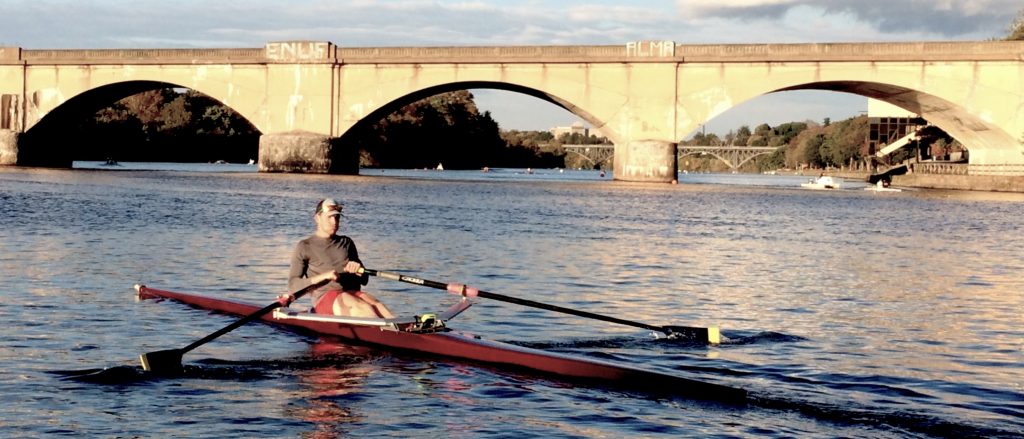
Following the success of Hudson Highlands: North River Suite Volume One, I embarked on a new project that celebrates another historic river. Made famous by William Birch, Nicolino Calyo, Thomas Eakins and others, the Schuylkill River has for nearly two centuries been the heartbeat of competitive amateur rowing in America. Last year’s exhibition Philadelphia Rowing: Breaking Barriers, at Independence Seaport Museum corrected the misperception that rowing is a sport reserved for privileged elites by highlighting how rowing today promotes diversity, fitness and community.
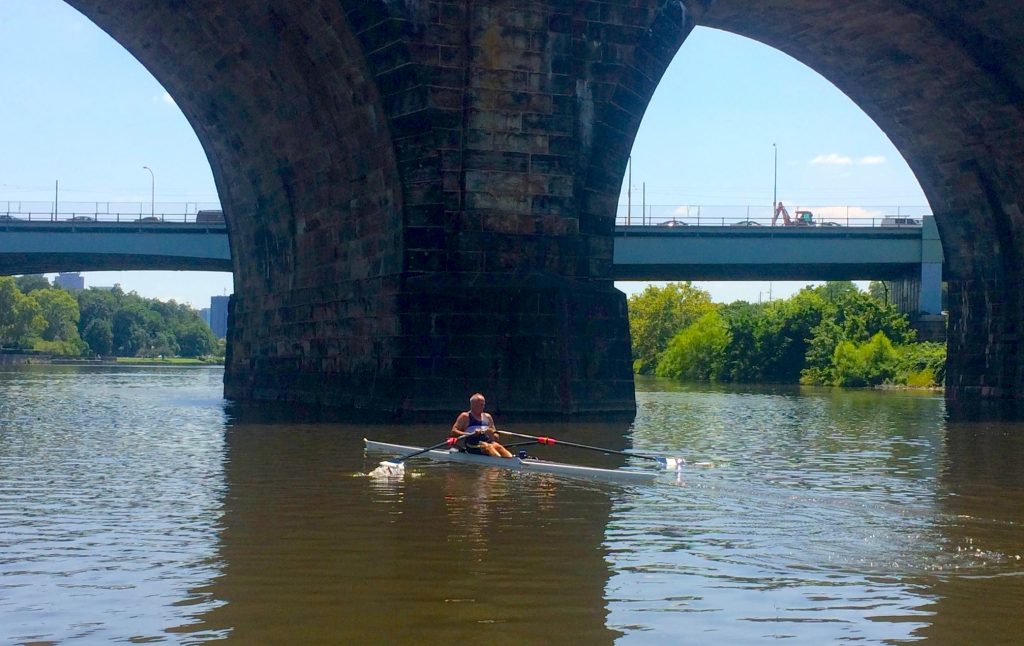
O.T.W. On the Water: The Schuylkill River will be the inaugural exhibition for a new community gallery at Independence Seaport Museum a a complement toits new River Alive galleries.
The installation opened October 24, 2018 and will be on view through September 2019.
“Leaping the dam with sift descent,
Now is the Schuylkill’s deep course bent
Beside that town of bursting fame
Which has despoiled the stream its name…
With accent fond and tender tone
Beyond all streams that land can boast,
I most repeat, and love the most.
To hymn its praise I weave this rhyme…”
(Charles Karsner Mills
The Schuylkill: A Centennial Poem. 1876)
Rivers nourish the land, the lifeblood of civilization. Along their banks great cities arose. Upon their waters commerce was born. Trade expanded culture and learning. Drawn to falls and pools, braving their floods and torrents, we keep company with rivers, marking time by their flow. The late J.B. Jackson noted that landscapes do not occur in nature, but are created when people adapt terrain to their use. As a painter of landscapes, this has been my mantra for many years.
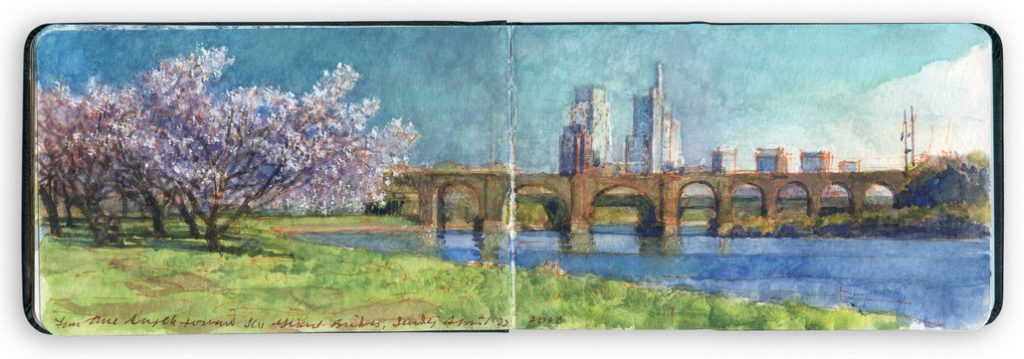
Drawing is a slow art. For me, it is how one learns what is beheld; a form of writing that begins with notes and observations, taking shape at last as a coherent, visual narrative.
My painting in books began by chance. During a month in hospital, I kept a drawing-journal. One day, my quotidian entry was in watercolor. The sketch became a painting.
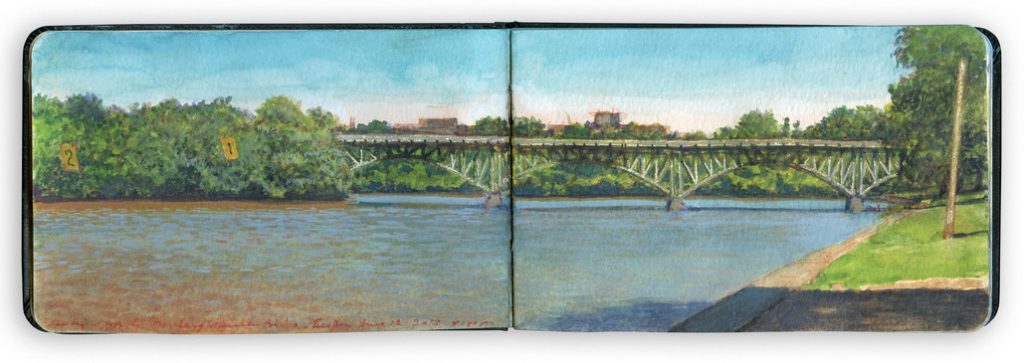
Suddenly liberated from easels, frames and walls. I renewed my study of 18th and 19th-century expeditionary artists, whom I admired. Working in books enhanced my range and mobility.
O.T.W. The Schuylkill River follows a similar project exploring the Hudson River from the source to the sea. Its first iteration was a limited-edition suite of archival prints, similar to those on exhibited here, which focused on the Highlands around West Point. Inspired by historic artists like William Birch, William Guy Wall, Jacques-Gerard Milbert and John-James Audubon, publishing fieldwork as prints, follows a two-hundred-year-old audience-interface model.

As a visual historian, I count myself among a growing number of living artists producing new works in dialogue with history, science and literature. My paintings are interventions.
As a witness, I am engaged with spaces organized by human activity, seen through a prism of time, place, and memory. Rowers, runners, cyclists and canoeists, Dragon-boat paddlers, fisher-folk, lovers and idlers, motorists and snapping-turtles animate the current that flows in the shadow of Laurel Hill and Fair Mount. Neither Thames, Seine nor Tiber, not Danube, Loire nor Rhine; no urban river can equal its gentle beauty.

Looking through my fieldbook, turning from one painting to the next, the river seems to murmur. Come. Be with me. Walk beside me. Glide upon me. I am your garden. All the while, behind its sylvan margin, the constant roar of the expressway, the clamor and din of the city.
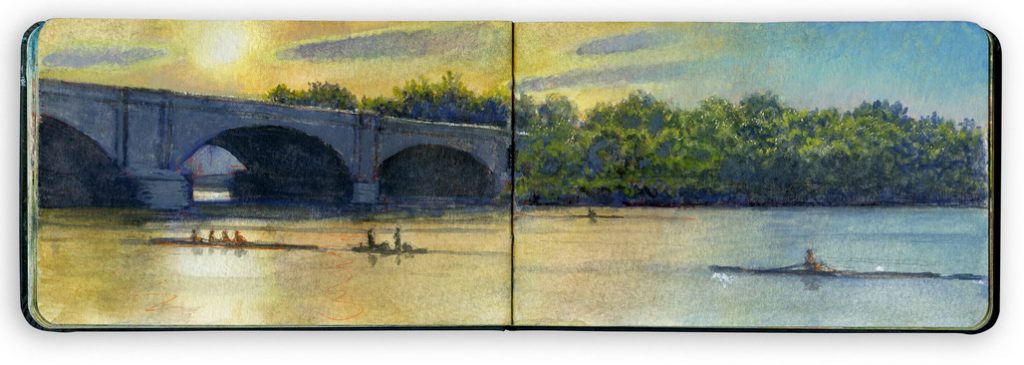
OTW: The Schuylkill River will be published by Needlewatcher Editions as a suite of archival digital prints based on McElhinney’s journal-paintings, in a limited edition of fifty. The official publication date will be October 24, 2018, to coincide with the opening of the exhibition at Independence Seaport Museum.

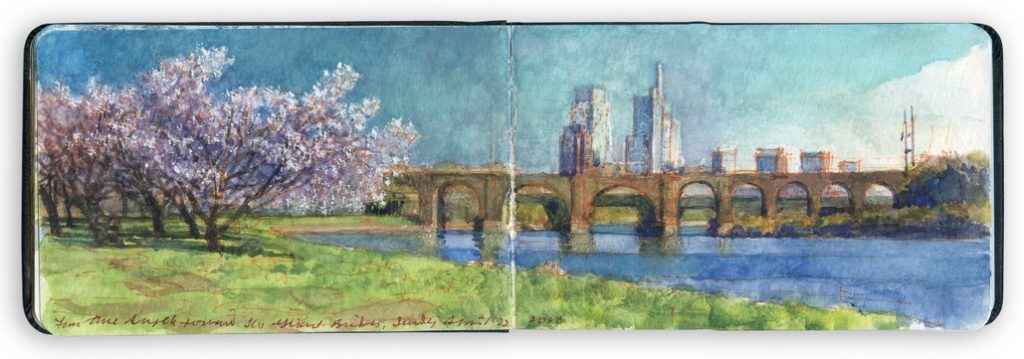
O.T.W. On The Water THE SCHUYLKILL RIVER: A suite of archival digital prints of journal-paintings by James Lancel McElhinney due to be published October 25, 2018
Inspired by expeditionary artists from Jacques le Moyne and John White to Seth Eastman and the brothers Kern, Delaware Valley native James Lancel McElhinney has revived the practice of journal-painting during trips to Europe, Hawaii, Ecuador, Peru, California, the Rocky Mountains, the American Southwest, the Hudson Valley, and now the Schuylkill River Fairmount Park.
Reviving practices employed by such traveler-artists as Benjamin Latrobe, William and Thomas Birch, Joshua Rowley Watson, Nicolino Calyo, James Lancel McElhinney now returns to Philadelphia to explore its Hidden River, call attention to its environmental priorities, explore its history and celebrate its beauty.
Works from the project O.T.W. The Schuylkill River will be featured in an exhibition at Independence Seaport Museum in Philadelphia, opening on October 24, 2018. The show will be on view for one year.
Following the examples of these late-18th and early 19th-century artists, McElhinney’s works have been reinterpreted as suites of prints, which can be enjoyed in the form of an unbound book, or framed for display on the wall.
O.T.W. The Schuylkill River, the limited edition, follows the success of McElhinney’s Hudson Highlands: North River Suite Volume One, which can be found in the following collections:
Avery Fine Art and Architecture Library, Columbia University
Boscobel House and Gardens, Garrison, New York
University of Denver. Library Special Collections. Denver Colorado
Hudson River Museum, Yonkers New York
Huntington Library and Museum, San Marino, California
West Point Museum, United States Military Academy
Yale Beinecke Rare Book and Manuscript Library. New Haven Connecticut
Newberry Library. Chicago, Illinois
And private collections in California, Colorado, Connecticut, Illinois, Massachusetts, New Jersey, New Mexico, New York, North Carolina and Pennsylvania.
PREVIEW
Needlewatcher Editions announces the forthcoming publication of O.T.W. The Schuylkill River, a suite of seven (7) numbered, signed and dated archival digital prints. Loosely bound in a fine cloth-covered Solander (clamshell) box, this suite of prints is accompanied by a descriptive chapbook. The edition is composed of 100% archival materials and limited to fifty (50) copies. Below is a selection of journal-paintings included in the deluxe limited edition.
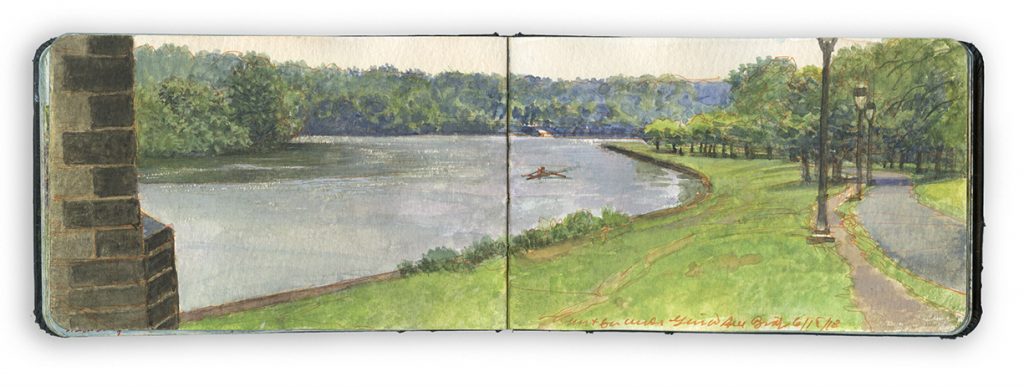
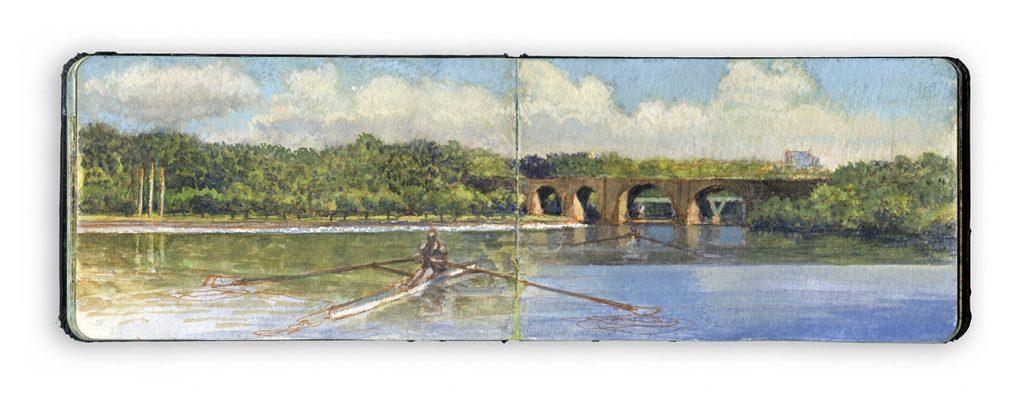
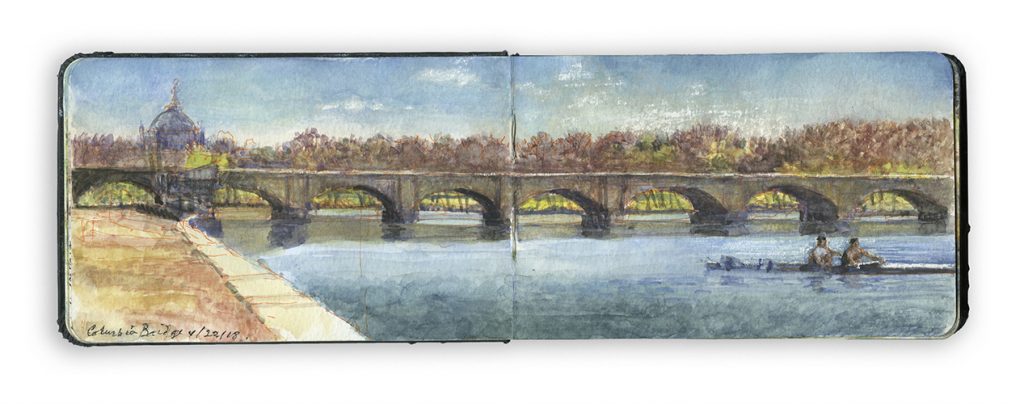
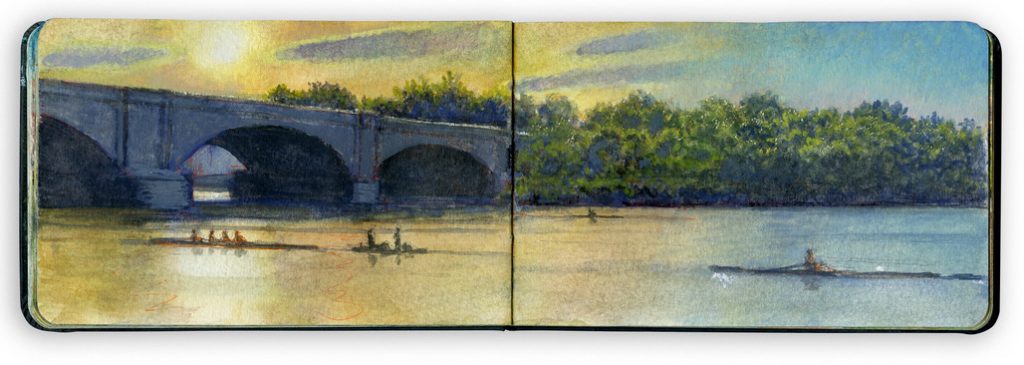
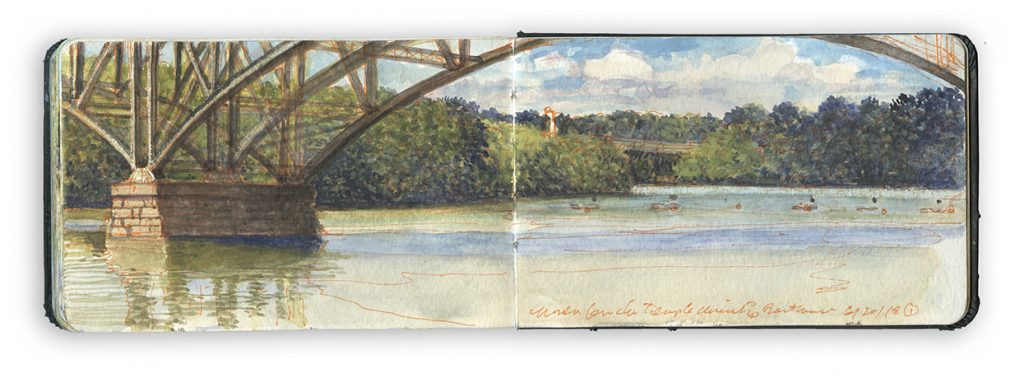

Within three months of its publication, more than two-thirds of the limited edition had been acquired by private buyers and collectors. Like my 2017 Hudson Highlands: North River Suite Number one, a number of copies will, or have entered public collections, including:
Free Library of Philadelphia. Print and Picture Collection
Historical Society of Pennsylvania. Library and Archives.
Independence Seaport Museum. Schuylkill River Collection.
Pennsylvania Academy of the Fine Arts. Archives and Special Collections
City of Philadelphia. Water Department. Archives and Special Collections
Temple University Samuel L. Paley Library. Special Collections Research Center
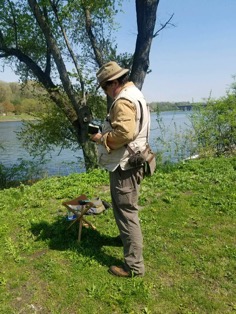
James Lancel McElhinney is a visual historian, author and publisher, known for his investigations of American waterways and historic battlefields. The Delaware Valley native attended Tyler School of Art, Skowhegan School of Painting and Sculpture and Yale.
He is a recipient of a 2017 Pollock-Krasner Grant, and an artist fellowship from the National Endowment for the Arts.
McElhinney is listed on the Master Artist Council of the Arthur Miller Foundation. O.T.W: The Schuylkill River will be on view from October 24, 2018, at Independence Seaport Museum, as the inaugural exhibition in a contemporary art-space complementing the museum’s new River Alive galleries. McElhinney lives in Manhattan with his wife, historian, author and curator Dr. Katherine Manthorne, and a feline named Maeve. His website is www.mcelhinneyart.com
Follow him on social media at: Facebook, Linkedin, Twitter, Instagram